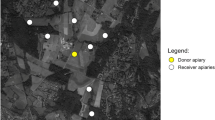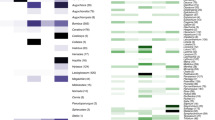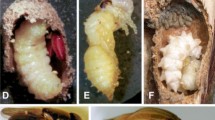Abstract.
In its native Europe, the bumblebee, Bombus terrestris (L.) has co-evolved with a large array of parasites whose numbers are negatively linked to the genetic diversity of the colony. In Tasmania B. terrestris was first detected in 1992 and has since spread over much of the state. In order to understand the bee’s invasive success and as part of a wider study into the genetic diversity of bumblebees across Tasmania, we screened bees for co-invasions of ectoparasitic and endoparasitic mites, nematodes and micro-organisms, and searched their nests for brood parasites. The only bee parasite detected was the relatively benign acarid mite Kuzinia laevis (Dujardin) whose numbers per bee did not vary according to region. Nests supported no brood parasites, but did contain the pollen-feeding life stages of K. laevis. Upon summer-autumn collected drones and queens, mites were present on over 80% of bees, averaged ca. 350–400 per bee and were more abundant on younger bees. Nest searching spring queens had similar mite numbers to those collected in summer-autumn but mite numbers dropped significantly once spring queens began foraging for pollen. The average number of mites per queen bee was over 30 fold greater than that reported in Europe. Mite incidence and mite numbers were significantly lower on worker bees than drones or queens, being present on just 51% of bees and averaging 38 mites per bee. Our reported incidence of worker bee parasitism by this mite is 5–50 times higher than reported in Europe. That only one parasite species co-invaded Tasmania supports the notion that a small number of queens founded the Tasmanian population. However, it is clearly evident that both the bee in the absence of parasites, and the mite have been extraordinarily successful invaders.
Similar content being viewed by others
Author information
Authors and Affiliations
Corresponding author
Additional information
Received 12 April 2006; revised 10 November 2006; accepted 15 November 2006.
Rights and permissions
About this article
Cite this article
Allen, G.R., Seeman, O.D., Schmid-Hempel, P. et al. Low parasite loads accompany the invading population of the bumblebee, Bombus terrestris in Tasmania. Insect. Soc. 54, 56–63 (2007). https://doi.org/10.1007/s00040-007-0908-y
Published:
Issue Date:
DOI: https://doi.org/10.1007/s00040-007-0908-y




